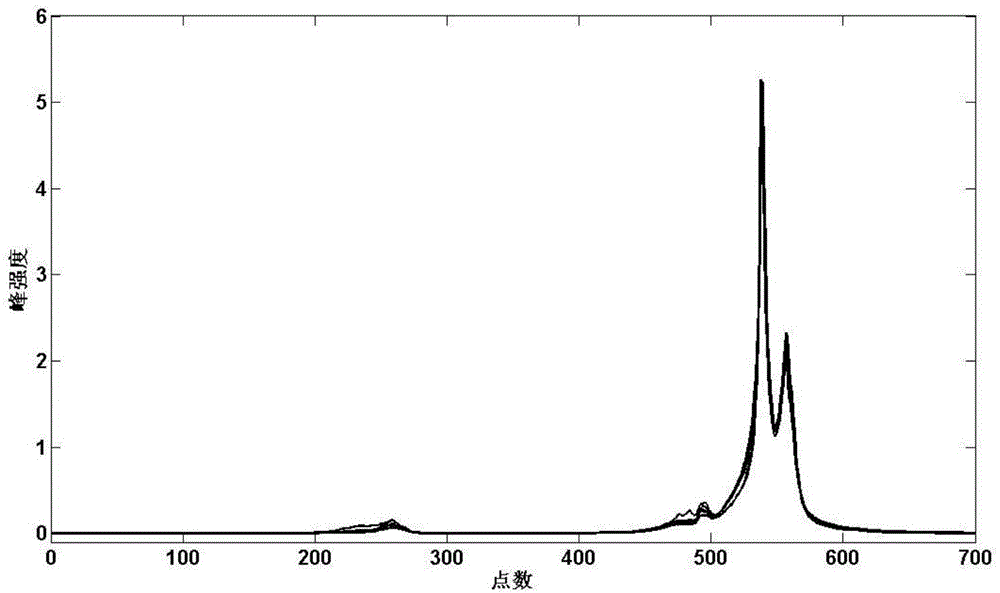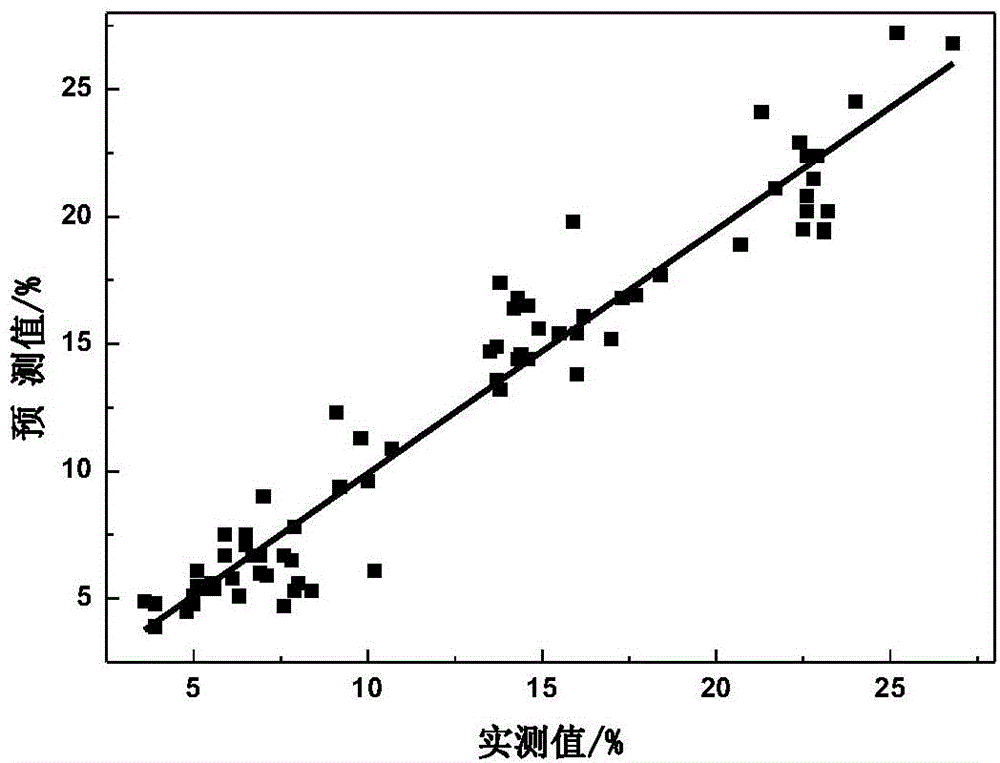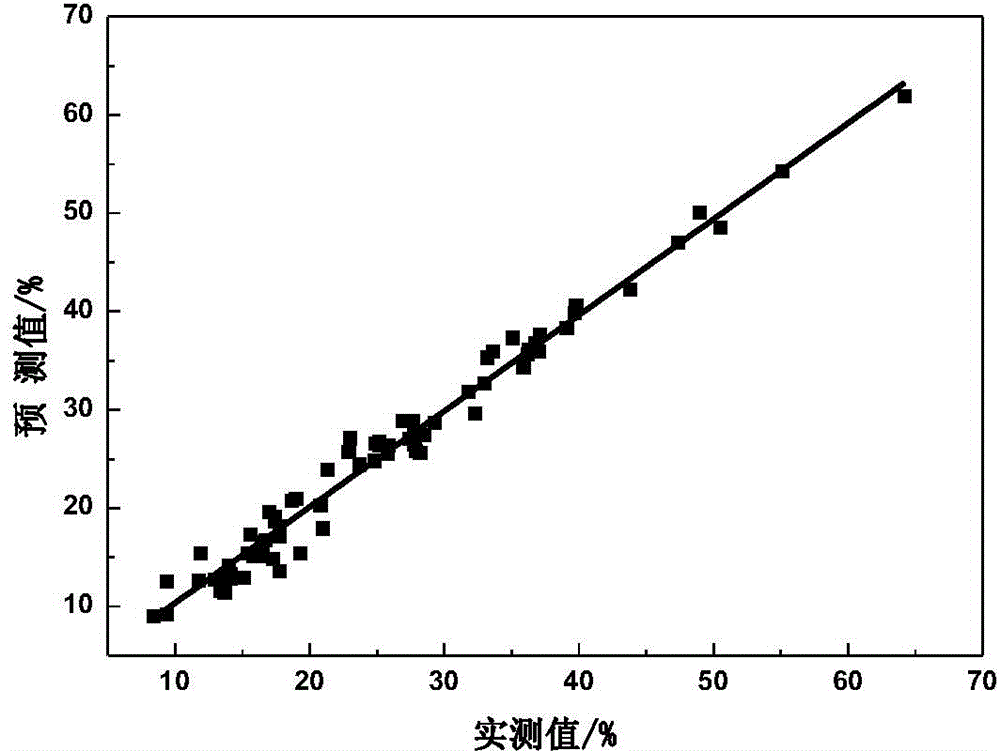Method for predicating diesel oil group composition by using nuclear magnetic resonance hydrogen spectrum
A technology of proton nuclear magnetic resonance spectroscopy and group composition, which is applied in the direction of measuring devices, instruments, scientific instruments, etc., and can solve the problems of cumbersome operation and long duration of separation and determination processes
- Summary
- Abstract
- Description
- Claims
- Application Information
AI Technical Summary
Problems solved by technology
Method used
Image
Examples
example 1
[0057] The spectrograms were processed by first-order differential, and the calibration model of the hydrogen NMR spectra of the diesel family was established and verified.
[0058] (1) Determination of group composition of diesel samples by standard methods
[0059] A total of 286 different types of diesel samples were collected, and the group composition of each sample was determined by the SH / T0606 method. The content distribution range of each component is shown in Table 1. 246 representative samples were collected to form the calibration set, and 40 samples were randomly selected as the validation set.
[0060] (2) Establish a calibration model with the calibration set samples
[0061] Take 3mL diesel oil sample, preheat it at 30°C for 10 minutes, and measure its proton nuclear magnetic resonance spectrum with a 58MHz nuclear magnetic resonance analyzer. The spectra of 5 samples are shown in figure 1 .
[0062] After the proton nuclear magnetic resonance spectra of 246...
example 2
[0069] The spectrograms were processed by second-order differential, and the calibration model of the hydrogen NMR spectra of the diesel family was established and verified.
[0070] Set up the diesel oil group composition calibration model by the method of example 1, the difference is that the nuclear magnetic resonance spectrum of the diesel oil sample that measures is carried out second-order differential processing, then take chemical shift as 7.4~8.0ppm and chemical shift as 0~4ppm spectrum region The peak intensity is associated with the sample family composition determined by the standard method, and a calibration model for various hydrocarbon components is established, and then the family composition of each sample in the verification set is predicted by the calibration model.
[0071] See Table 2 for the relevant statistical parameters of establishing the calibration model with the samples in the calibration set and verifying it with the samples in the validation set. ...
example 3
[0076] The spectra were processed by first-order and second-order differentials, and a calibration model for the hydrogen NMR spectra of diesel family components was established and verified.
[0077] The method of example 1 establishes the correction model of diesel oil group composition, and the difference is that the proton nuclear magnetic resonance spectrum of the diesel oil sample that measures is carried out first-order differential processing first, carries out second-order differential processing again, then takes chemical shift as 7.4~8.0ppm and chemical shift The peak intensity of the spectral region with a displacement of 0-4ppm is correlated with the sample family composition determined by the standard method, and a calibration model for various hydrocarbon components is established, and then the calibration model is used to predict the family composition of each sample in the verification set.
[0078] See Table 3 for the relevant statistical parameters of establi...
PUM
| Property | Measurement | Unit |
|---|---|---|
| Resonant frequency | aaaaa | aaaaa |
Abstract
Description
Claims
Application Information
 Login to View More
Login to View More - R&D
- Intellectual Property
- Life Sciences
- Materials
- Tech Scout
- Unparalleled Data Quality
- Higher Quality Content
- 60% Fewer Hallucinations
Browse by: Latest US Patents, China's latest patents, Technical Efficacy Thesaurus, Application Domain, Technology Topic, Popular Technical Reports.
© 2025 PatSnap. All rights reserved.Legal|Privacy policy|Modern Slavery Act Transparency Statement|Sitemap|About US| Contact US: help@patsnap.com



